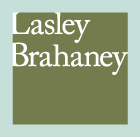Princeton Packet Article: Excerpts from ‘Build it (green) and they will come’
By: Diane Landis Hackett, Special Writer, April 4th, 2007
The DCA has seen a growing interest in green building from all sectors of the housing industry — realtors, developers, builders, buyers, architects and other design professionals.
A "state plan" that is currently being written will include information on sustainable neighborhood design. Additionally, the Office of Smart Growth currently offers "Go Green" grants for sustainable design planning.
Janet Lasley of Lasley Brahaney Architects and Construction in Princeton, says she was passionate about green building in the 1970s but then that interest died down. Now, she says her interest is rekindled.
Ms. Lasley says she does have customers who are interested in building or remodeling using green practices, but they are sometimes leery of spending too much extra up front. She adds that the up-front investment in energy efficiency should be paid for within five years.
And while the trend seems to be gaining momentum, Ms. Lasley says building green does not have to be a high-end endeavor. She suggests that remodelers can upgrade their insulation package, choose high-efficiency air conditioning, furnace and boiler units, use paints with low VOC (Volatile Organic Compounds) — the chemicals that make paint so smelly — and compact fluorescent lighting, and be doing a lot for the environment as well as their energy bills.
"Anybody can do this. Even people who aren't doing a renovation can go through the house and replace the light bulbs and upgrade caulking packages," says Ms. Lasley who has recently purchased a building that she will be renovating for her own office space. She intends to apply for United States Green Building Council (USGBC) Leadership in Energy and Environmental Design (LEED) certification for the remodel.
So, why would a homebuyer or owner want to go green? According to Scott Chrisner, a founding member of the New Jersey Chapter of the USGBC, because the home "lasts longer, is cleaner and less money is spent on utilities."
The USGBC has developed national green building standards, called LEED, which are being used as guidelines for many new building projects across the country.
Mr. Chrisner operates a consulting firm that brings together government officials, builders, designers and other parties at the start of a construction job to encourage green building practices, where practical, throughout the entire project. He says that buyers of a LEED-certified house may pay an extra $5,000 up front, which rolls into their mortgage, and in return they receive, good indoor air quality, environmentally friendly materials without off-gassing or smelly carpets, improved indoor air quality — which means less dust and less asthma and upper respiratory problems — and they will also use 20- to 30-percent less water, have less moisture problems and lower energy bills.
But, while builders and architects are encouraging the use LEED building standards, consumer personal choices still lag.





